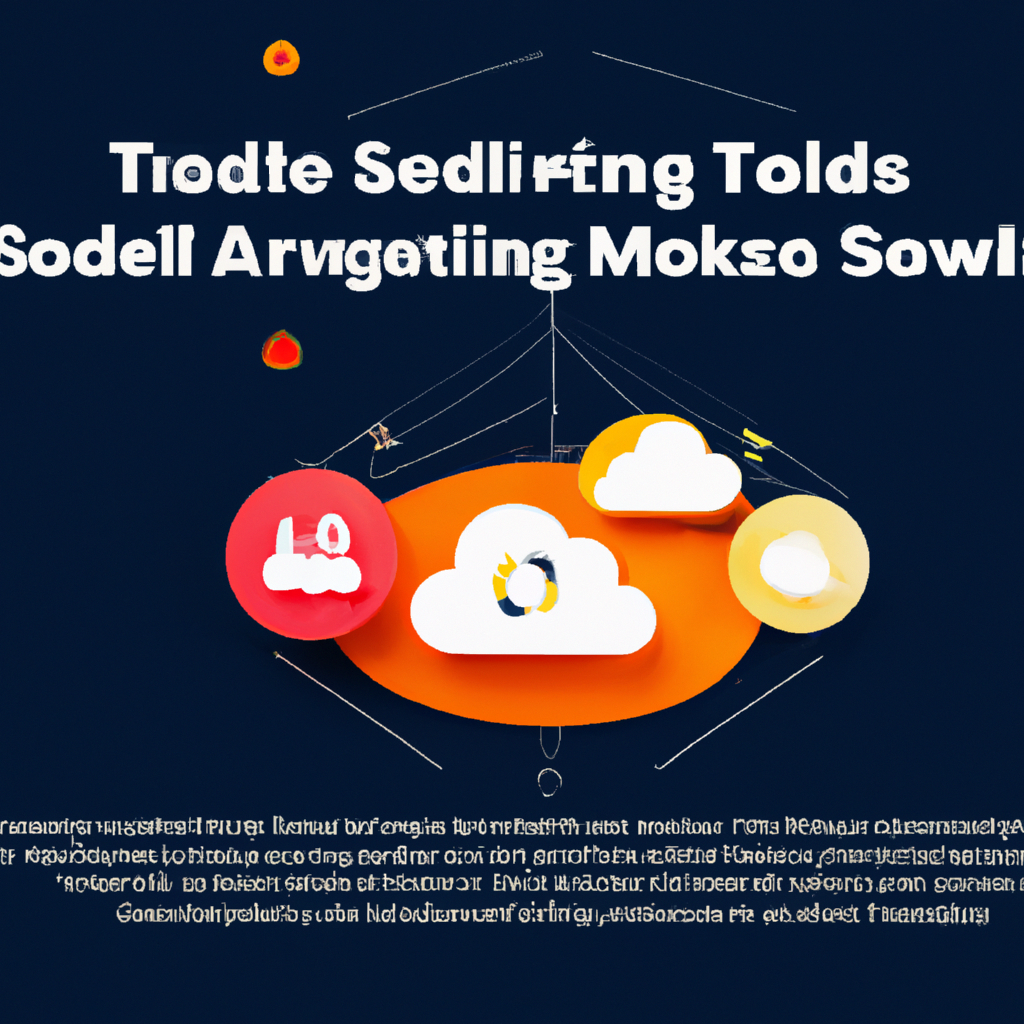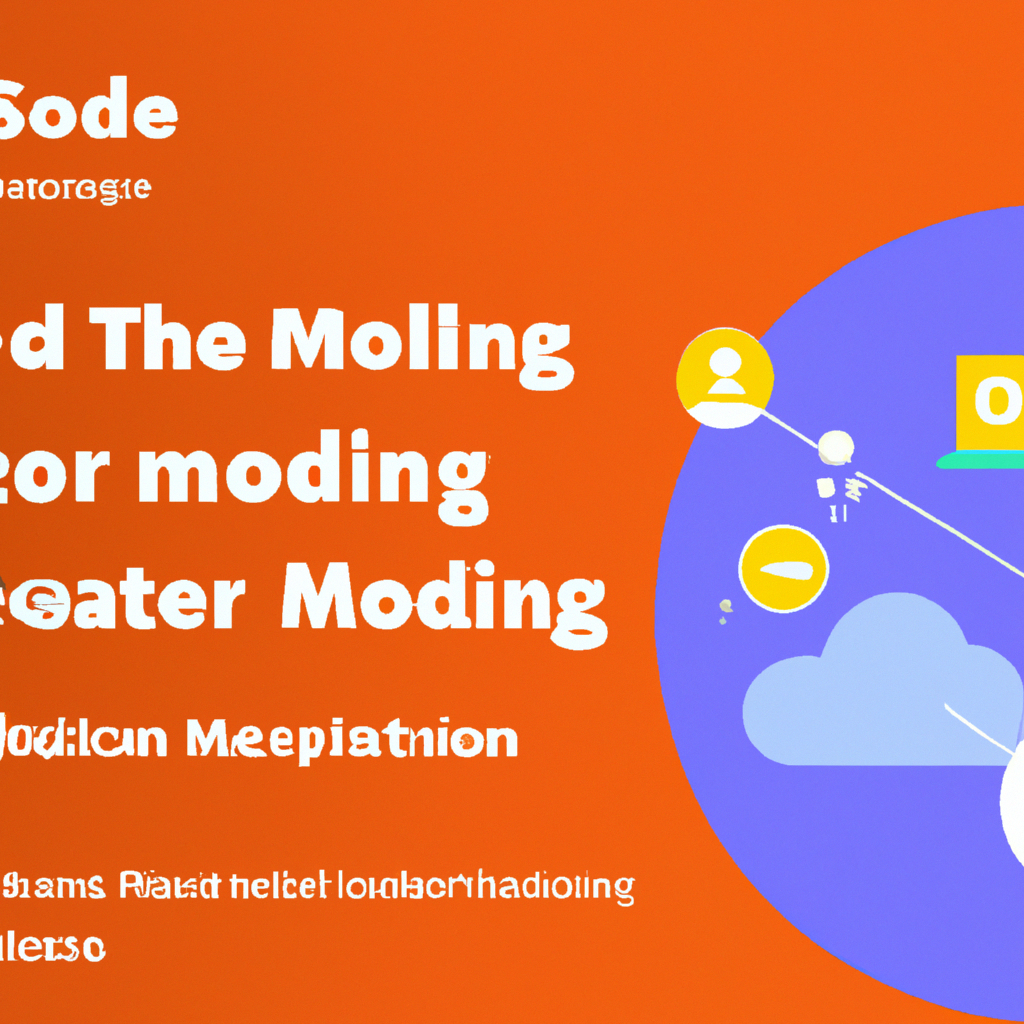So you’ve heard the term “SaaS operating model” being thrown around, but you’re not quite sure what it means. Well, you’re in the right place because in this article, we’re going to break it down for you. A SaaS operating model refers to the structure and framework that software as a service (SaaS) companies follow to deliver their products and services to customers. It encompasses various components, such as pricing, customer support, product development, and infrastructure. By understanding how a SaaS operating model works, you can gain insights into the inner workings of these companies and how they provide value to their customers.
Definition of a SaaS Operating Model
Understanding SaaS
SaaS, short for Software as a Service, is a cloud computing model where software is provided to customers over the internet. Unlike traditional software, SaaS eliminates the need for users to install and maintain the software on their own systems. Instead, the software is hosted and managed by a SaaS provider, allowing users to access it through a web browser or a dedicated application.
Defining an Operating Model
An operating model refers to the framework and structure that defines how an organization operates and delivers value to its customers. In the context of SaaS, a SaaS operating model outlines the processes, technologies, and strategies used to deliver software services to users. It encompasses various aspects such as pricing, deployment, scalability, data security, and customer support.
Benefits of a SaaS Operating Model
Cost-Effectiveness
One of the key advantages of a SaaS operating model is its cost-effectiveness. With SaaS, you don’t need to invest in expensive hardware or infrastructure as the software is hosted and maintained by the provider. Additionally, SaaS typically operates on a subscription-based pricing model, allowing businesses to pay only for the resources they need and scale up or down as required.
Scalability
Scalability is another crucial benefit of a SaaS operating model. As businesses grow, they require software that can accommodate increasing user demands. SaaS providers are built to handle scalability efficiently, enabling businesses to easily add or remove users, increase storage capacity, and handle higher user loads without any significant disruptions.
Easy Implementation and Integration
Implementing and integrating traditional software can be a time-consuming process involving complex installations, configurations, and compatibility checks. In contrast, a SaaS operating model offers easy implementation with minimal setup and configuration requirements. SaaS applications are designed to seamlessly integrate with other software solutions, allowing businesses to streamline their workflows and maximize productivity.

Key Components of a SaaS Operating Model
Software as a Service (SaaS)
At the heart of a SaaS operating model is the concept of Software as a Service. SaaS refers to the software delivery model where applications are hosted by a provider and accessed by users over the internet. This eliminates the need for users to install, maintain, and update the software on their devices, as all these tasks are handled by the provider.
Subscription-based Pricing
SaaS operates on a subscription-based pricing model, which means that users pay a regular fee to access and use the software. This pricing structure offers businesses flexibility and cost predictability, as they can choose subscription plans that align with their needs and budget. It also allows businesses to scale their usage up or down as required, helping them optimize costs.
Multi-Tenancy
Multi-tenancy is a fundamental concept in a SaaS operating model. It refers to the ability of a SaaS provider to serve multiple customers, or tenants, from a single instance of the software. This means that each customer shares the same underlying infrastructure, resources, and codebase, while their data remains securely isolated. Multi-tenancy enables efficient resource utilization, reduces operational costs, and allows for seamless updates and maintenance.
Automated Updates and Maintenance
In a SaaS operating model, software updates and maintenance tasks are typically automated and handled by the provider. This eliminates the need for users to manually install updates or perform routine maintenance activities. With automatic updates, users always have access to the latest features, bug fixes, and security patches, ensuring their software is up-to-date and protected.
SaaS Operating Model vs. Traditional Software
Ownership and Licensing
One of the key differences between a SaaS operating model and traditional software is the ownership and licensing structure. With traditional software, businesses typically purchase a perpetual license, which gives them the right to use the software indefinitely. In contrast, SaaS operates on a subscription-based model, where businesses pay ongoing fees for access to the software. This means that businesses don’t own the software itself but have the right to use it as long as they continue to pay for the subscription.
Infrastructure Management
Another distinction between a SaaS operating model and traditional software lies in infrastructure management. With traditional software, businesses are responsible for managing the infrastructure required to run the software, including hardware, servers, and networks. In a SaaS operating model, the provider takes care of infrastructure management, allowing businesses to focus on using the software rather than dealing with the underlying technical complexities.
Customization and Upgrades
Customization and upgrades also differ between a SaaS operating model and traditional software. Traditional software often allows businesses to customize the software to suit their specific needs. However, these customizations can be time-consuming and may require additional support and maintenance. In a SaaS operating model, customization options may be limited, as the software is designed to be used by multiple tenants. However, SaaS providers often offer a range of configuration options to tailor the software to some extent. Additionally, upgrades and updates in a SaaS operating model are generally handled seamlessly by the provider, ensuring users always have access to the latest features and improvements.

Implementing a SaaS Operating Model
Choose the Right SaaS Vendor
When implementing a SaaS operating model, selecting the right SaaS vendor is crucial. Consider factors such as the vendor’s reputation, experience, security measures, scalability, and customer support. Evaluate their track record of delivering reliable and high-quality services to ensure they can meet your business requirements effectively.
Define your Business Requirements
Before adopting a SaaS operating model, it is essential to clearly define your business requirements. Identify the specific software functionalities and features you need, as well as the scalability, integration, and security requirements. This helps in selecting a SaaS provider that can meet your needs and ensure a smooth implementation process.
Data Security Considerations
Data security is of paramount importance when implementing a SaaS operating model. Ensure that the SaaS vendor has robust security measures in place, such as encryption, access controls, and regular backups. Understand their data privacy policies and compliance standards to ensure that your data is protected and meets regulatory requirements. It is also important to establish clear data ownership and responsibility agreements to avoid any potential conflicts or data breaches.
Challenges and Risks of the SaaS Operating Model
Dependency on Vendor
One of the challenges of a SaaS operating model is the dependency on the vendor. Since the software is hosted and managed by the vendor, businesses rely on their infrastructure, availability, and support. Any issues with the vendor’s services can impact the availability and performance of the software, potentially causing disruptions to business operations. It is important to choose a reliable and reputable vendor to minimize the risks associated with dependency.
Data Security and Privacy Concerns
Data security and privacy are significant concerns with a SaaS operating model. As businesses store their data on the vendor’s servers, there is a risk of unauthorized access or data breaches. It is essential to thoroughly assess the vendor’s security measures, data protection policies, and compliance standards to ensure the confidentiality and integrity of your data. Implementing additional security measures such as encryption and access controls can also help mitigate these risks.
Limited Customization Options
While SaaS offers convenience and flexibility, it may have limitations in terms of customization. Since the software is designed to be used by multiple tenants, extensive customization may not be possible. Businesses with unique requirements may find it challenging to tailor the software to their specific needs. It is important to carefully assess your customization requirements and evaluate whether the available configuration options offered by the SaaS vendor can meet your needs adequately.

This image is property of pixabay.com.
Best Practices for a Successful SaaS Operating Model
Establish Clear Service Level Agreements (SLAs)
When adopting a SaaS operating model, it is crucial to establish clear Service Level Agreements (SLAs) with the vendor. SLAs outline the expected level of service, including uptime, performance guarantees, and support response times. Clearly defined SLAs help set expectations, ensure accountability, and provide a basis for measuring vendor performance.
Ensure Data Portability and Vendor Lock-In Prevention
To minimize the risk of vendor lock-in and ensure flexibility, it is essential to consider data portability. Ensure that the SaaS vendor provides mechanisms to easily export and migrate your data to another platform if needed. By maintaining control over your data, you can switch vendors or transition to other deployment models without significant challenges.
Regularly Monitor and Evaluate Performance
Monitoring and evaluating the performance of your SaaS operating model is essential to identify any issues or areas for improvement. Utilize monitoring tools to track system performance, uptime, and user experience. Regularly review performance metrics, user feedback, and support tickets to address any issues promptly and optimize the overall performance and user satisfaction.
Examples of Successful SaaS Operating Models
Salesforce
Salesforce is a prime example of a successful SaaS operating model. It provides cloud-based customer relationship management (CRM) software to businesses of all sizes. Salesforce offers a comprehensive suite of CRM tools accessible through a subscription-based model, allowing businesses to manage their sales, marketing, and customer service functions effectively.
Netflix
Netflix revolutionized the entertainment industry with its SaaS operating model. By delivering streaming media services over the internet, Netflix eliminated the need for physical media and rental stores. With a vast library of movies and TV shows accessible through a subscription, Netflix has become a dominant player in the digital entertainment space.
Google Workspace
Formerly known as G Suite, Google Workspace is a collection of cloud-based productivity and collaboration tools offered by Google. It includes applications like Gmail, Google Drive, Google Docs, Google Sheets, and more. Google Workspace operates on a SaaS model, providing businesses with a suite of powerful tools for communication, document collaboration, and productivity.

This image is property of pixabay.com.
Future Trends in SaaS Operating Models
Artificial Intelligence and Machine Learning Integration
Artificial Intelligence (AI) and Machine Learning (ML) integration is expected to play a significant role in the future of SaaS operating models. By leveraging AI and ML technologies, SaaS applications can offer advanced features such as intelligent automation, predictive analytics, and personalized recommendations.
Edge Computing
Edge computing holds promise for enhancing the performance and responsiveness of SaaS applications. By bringing computing power closer to the end-users, edge computing reduces latency and improves real-time processing capabilities. This can greatly benefit SaaS applications that require low latency, such as real-time analytics and IoT solutions.
Vertical SaaS
Vertical SaaS refers to industry-specific software solutions tailored to meet the unique needs of particular vertical markets. As businesses seek more specialized software to address industry-specific challenges, the demand for Vertical SaaS is expected to rise. Vertical SaaS operating models offer specialized functionality, targeted industry expertise, and tailored workflows, providing businesses with more efficient and effective solutions.
Conclusion
A SaaS operating model offers numerous benefits, including cost-effectiveness, scalability, and easy implementation. It eliminates the need for businesses to invest in costly infrastructure or worry about software maintenance. However, challenges such as dependency on the vendor, data security concerns, and limited customization options need to be carefully considered. By following best practices and selecting reputable vendors, businesses can successfully implement a SaaS operating model and leverage its advantages to drive growth and efficiency in their operations.

This image is property of pixabay.com.
